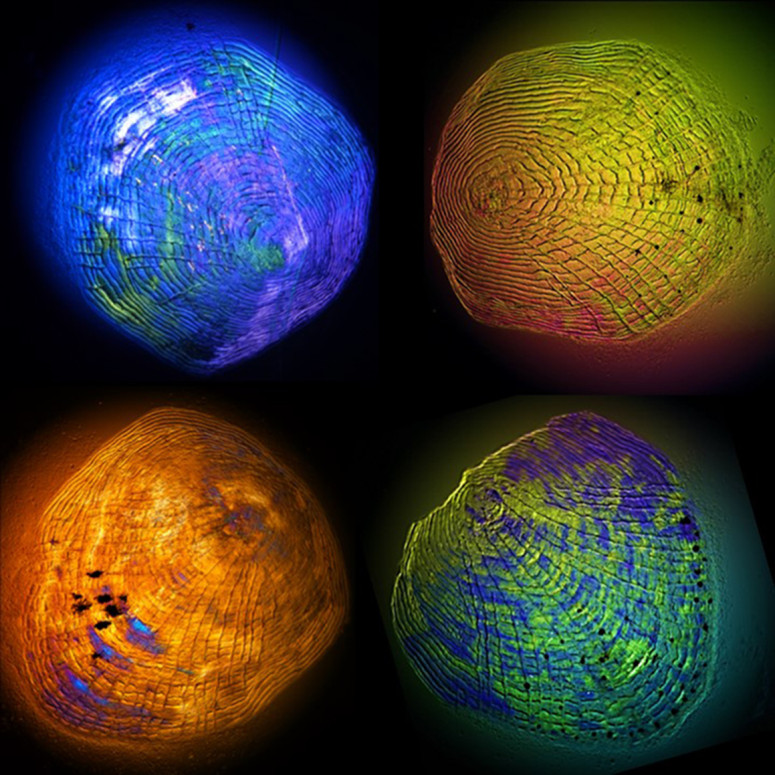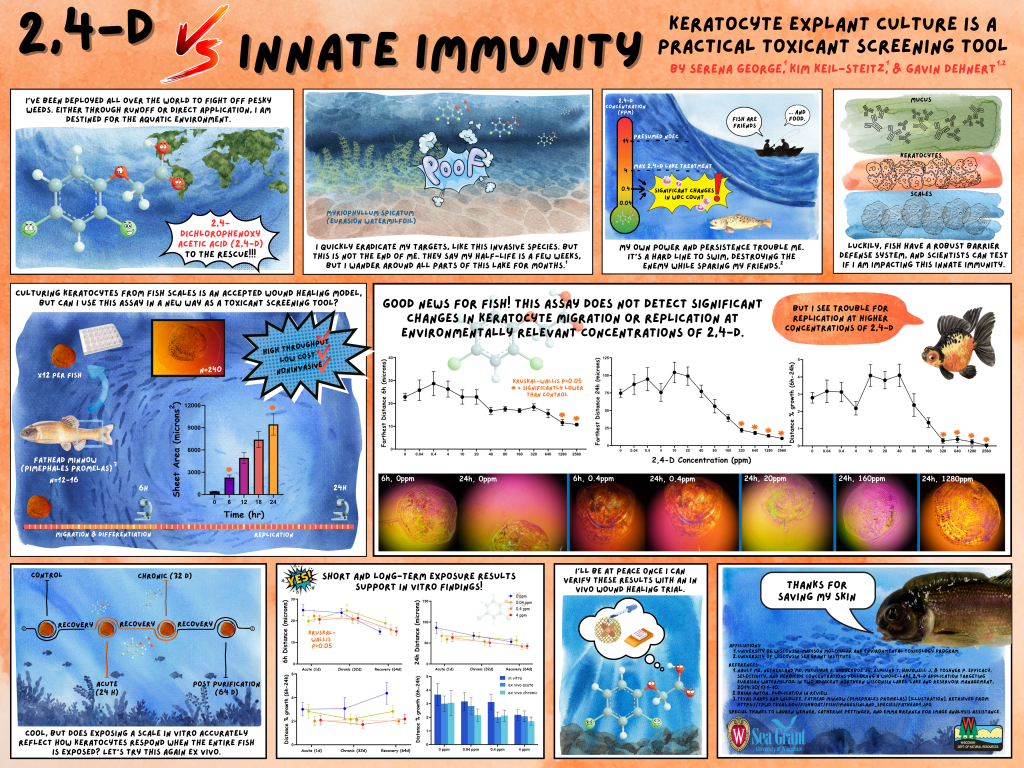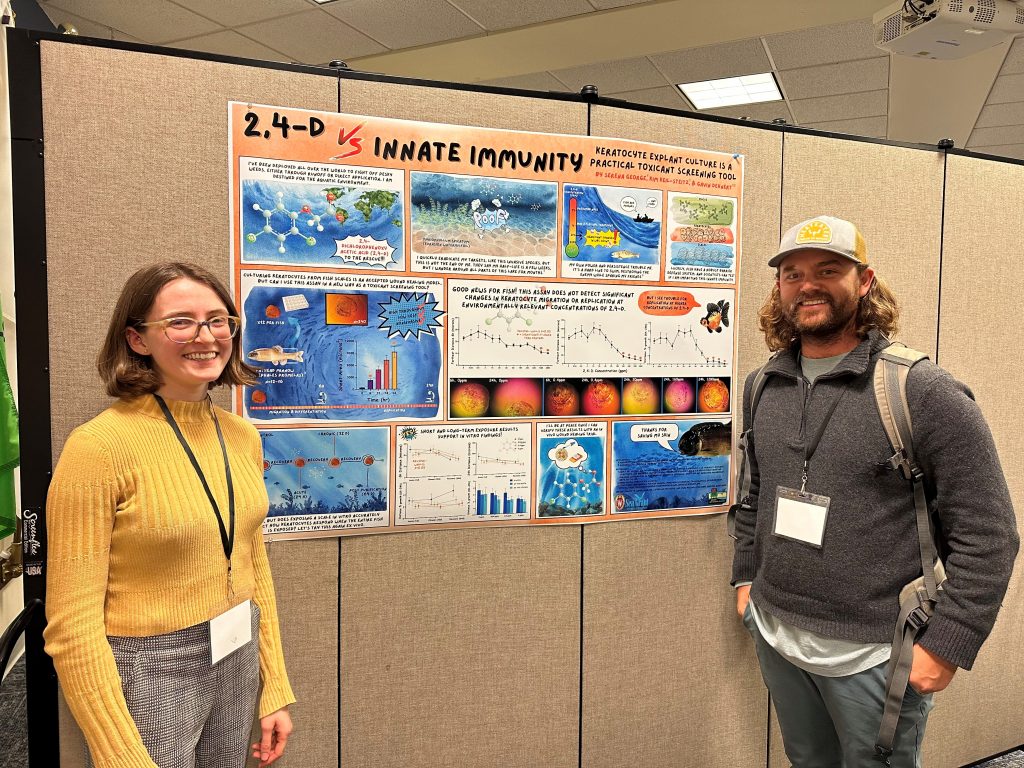Cool science image winner!

Fish scales from a fathead minnow under a light microscope. Image credit: Serena George, University of Wisconsin-Madison
For the past 14 years, the University of Wisconsin–Madison has conducted a Cool Science Image Contest. This year, one of the winners is Serena George, a graduate student in veterinary medicine and molecular and environmental toxicology who works with Wisconsin Sea Grant Emerging Contaminants Scientist Gavin Dehnert to study how herbicides impact fish health.
George’s image, taken on a light microscope, shows sheets of cells migrating away from the edge of four fathead minnow scales. In a dish in the lab, the cells slough off and move away as they would across the wound of a live fish. By doping the dish with different chemicals, researchers can study the way environmental contaminants affect wound-healing in the wild.
Other images in the contest span a wide range of perception — from molecules interacting in the membranes of individual cells to the stretchy insides of a delicious cheese puff to a sky full of colors made by the strongest solar storm in decades.
The winning entries showcase the research, innovation, scholarship and curiosity of the UW–Madison community through traditional fine art techniques used to study the physics of interacting liquids, the surprising and beautiful results of chemical and geological processes, and new ways to manipulate and reveal biological processes.
The images go on display next week in an exhibit at the McPherson Eye Research Institute’s Mandelbaum and Albert Family Vision Gallery on the ninth floor of the Wisconsin Institutes for Medical Research, 1111 Highland Ave. The exhibit, which runs through the end of 2024, opens with a reception — open to the public — at the gallery on Thursday, Oct. 3, from 4:30 to 6:30 p.m.
The post Cool science image winner! first appeared on Wisconsin Sea Grant.Blog | Wisconsin Sea Grant
https://www.seagrant.wisc.edu/blog/cool-science-image-winner/


